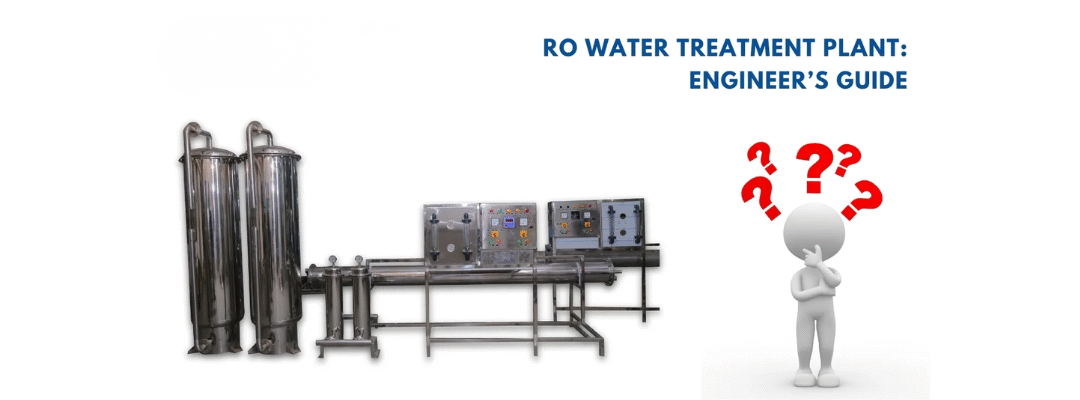Reverse Osmosis (RO) systems are highly effective at producing pure water. However, to keep the membranes working efficiently and reliably over time, comprehensive pre-treatment and post-treatment are essential.
- Pre-treatment prepares raw water by removing harmful contaminants that can damage RO membranes.
- Post-treatment ensures the purified water meets quality, taste, and safety requirements for its final use—whether in food processing, pharmaceuticals, or potable supply.
This guide walks you through both processes, with practical insights and equipment guidance based on real-world industry standards.
1. The Role of Pre-Treatment and Post-Treatment
| Treatment Stage | Purpose |
|---|---|
| Pre-Treatment | Protects the RO system from fouling, scaling, and chemical attack. |
| Post-Treatment | Refines the RO product water—balancing pH, reintroducing minerals, and ensuring safety. |
Both stages improve system performance, water quality, and reduce maintenance frequency.
2. Pre-Treatment in RO Water Plants
Why It’s Critical
RO membranes are sensitive. Without pre-treatment, issues like biofouling, scaling, and oxidation damage can drastically reduce membrane life and performance.
Typical Pre-Treatment Steps
| Stage | Description | Benefit |
|---|---|---|
| Raw Water Pump | Draws water from source | Maintains pressure consistency |
| Multi-Media Filter (MMF) | Removes suspended solids using gravel, sand, and anthracite | Prevents downstream clogging |
| Activated Carbon Filter (ACF) | Adsorbs chlorine, organics, and odors | Protects RO membranes from chlorine attack |
| Softener / Antiscalant Dosing | Ion exchange or chemical injection | Prevents scale formation from Ca & Mg |
| Micron Filter (5–20 µm) | Cartridge filter removes fine particles | Final barrier before RO membrane |
| pH Adjustment (optional) | Dosing with acid/alkali | Optimizes membrane rejection performance |
Example Mistake: Installing an ACF after the RO module—this defeats the purpose of chlorine removal.
3. Feedwater Analysis: A Must-Do
Before choosing any pre-treatment method, perform a comprehensive water test for:
- Total Dissolved Solids (TDS)
- Hardness
- Iron/Manganese
- Chlorine
- Silt Density Index (SDI)
Tip: SDI < 3 is ideal. SDI > 5 can cause irreversible fouling.
4. Post-Treatment in RO Water Plants
RO water can be too pure, making it corrosive or flat-tasting. Post-treatment balances the water’s chemistry and ensures it’s suitable for consumption or industrial reuse.
Common Post-Treatment Steps
| Stage | Description | Why It Matters |
|---|---|---|
| pH Correction | Alkaline dosing (e.g., soda ash) | Reduces corrosiveness |
| Remineralization | Adds Ca/Mg via calcite or dolomite | Improves taste and mineral balance |
| UV Disinfection | UV lamps kill microbes | Ensures biological safety |
| Ozonation/Chlorination | Residual disinfection for stored water | Prevents regrowth in tanks |
| Post-Carbon Filter | Polishes taste, removes odors | Final flavor enhancement |
| Deionization (DI) | Resin beds remove all ions | Required in pharma, electronics |
| Hygienic Storage | Closed-loop tanks & level sensors | Prevents recontamination |
5. Comparison Table
| Feature | Pre-Treatment | Post-Treatment |
|---|---|---|
| Objective | Protect membranes | Improve water usability |
| Key Concerns | Hardness, turbidity, chlorine | pH, minerals, microbes |
| Tools Used | MMF, ACF, Softener, Antiscalant | UV, Ozone, Remineralizer |
| Chemicals | NaHSO₃, antiscalants, acid/alkali | CaCO₃, NaOH, disinfectants |
6. Avoid These Common Pitfalls
- Skipping pre-treatment on borewell or high-iron water.
- Using large filters without pressure drop consideration.
- No disinfection for tank-stored RO water.
- Ignoring feedwater pH and SDI before design.
Case Insight: A dairy plant in Pune extended its membrane life by 3 years after switching from softener to antiscalant dosing based on iron-rich borewell feed.
7. Maintenance Tips for Longevity
| Task | Frequency |
|---|---|
| MMF/ACF Backwash | Daily or per pressure drop |
| Micron Filter Replacement | Every 3–6 months |
| UV Lamp Cleaning | Monthly |
| Dosing Pump Calibration | Quarterly |
| System Flush (Idle >24h) | Before restart |
| Tank Disinfection | Every 2–3 months |
Remember: A clean pre-treatment system = less chemical cleaning for RO.


Recent Comments